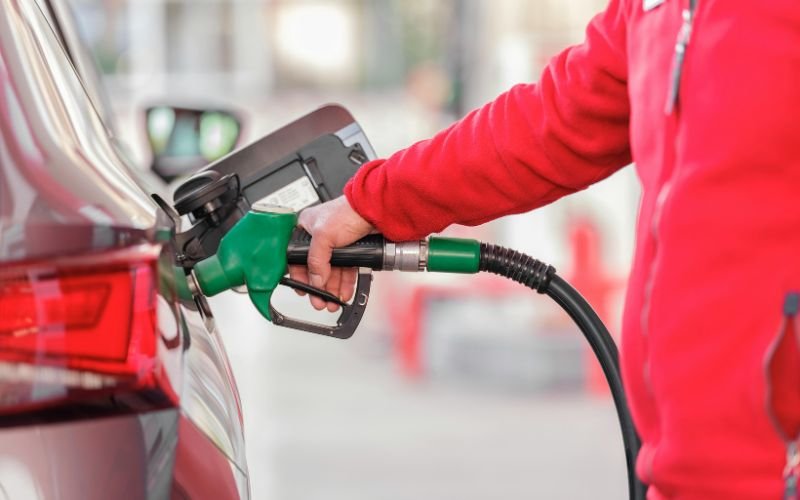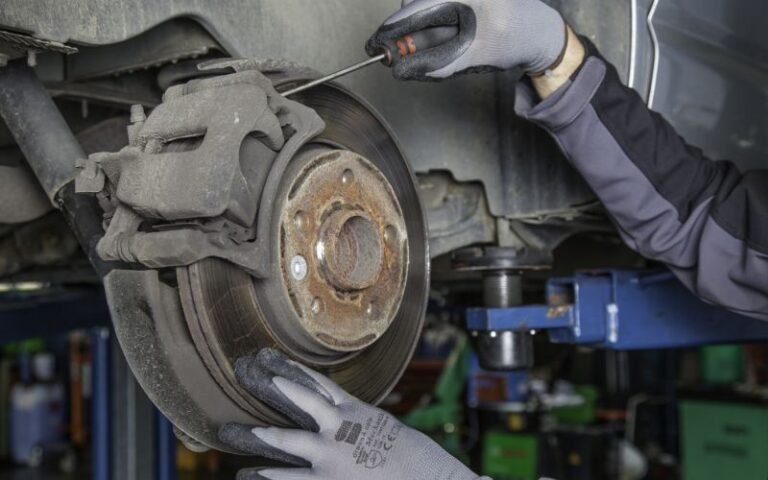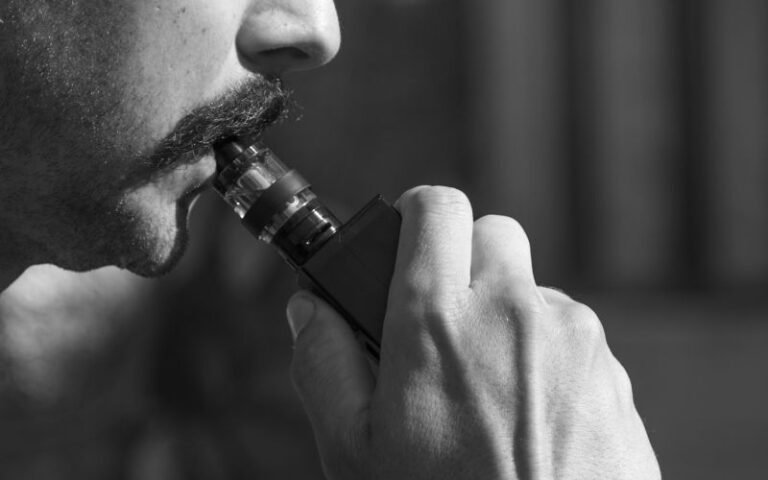Fuel Pressure Regulator
When your car’s engine starts misfiring, stalling, or showing signs of poor fuel economy, chances are the culprit lies deep within your fuel system. One often-overlooked component, the pressure fuel regulator, plays a silent but vital role in your vehicle’s performance and efficiency. Whether you’re a DIY mechanic, a performance tuner, or just someone trying to keep your ride running smoothly, understanding this part can save you time, money, and headaches.
In this comprehensive guide, we will cover everything you need to know about the fuel pressure controller, including:
- What they are and how they work
- Common signs of failure
- Troubleshooting and diagnostics
- Replacement procedures
- Tuning considerations
- Product options and recommendations
- FAQs and professional advice
What Is a Fuel Demand Regulator?
A Power pressure regulator is a critical component in your vehicle’s fuel delivery system. Its primary job is to maintain a consistent fuel pressure going to the fuel injectors, regardless of varying engine loads or throttle positions.
How It Works
Inside a typical internal combustion engine, the fuel system relies on a pressurized stream of gasoline provided by the fuel pump. If fuel pressure is too high, the engine may run rich, burning more fuel than necessary. Too low, and the engine could run lean, leading to misfires, rough idling, or stalling.
The pressure regulator acts like a pressure control valve, regulating the pressure in the fuel rail and maintaining the ideal air-fuel ratio for combustion.
Key Components:
- Diaphragm: Responds to vacuum or boost from the intake manifold
- Spring-loaded valve: Opens or closes to allow fuel to return to the fuel tank via a return line
- Vacuum line connection: Helps adjust fuel pressure based on engine demand
Some modern vehicles use returnless systems, where the Power pressure control is built into the fuel pump module. Older vehicles usually have a separate regulator mounted on the fuel rail.
Types of Fuel Pressure Measures
Not all fuel regulators are created equal. The type installed depends on the vehicle’s fuel system architecture and intended use.
1. Mechanical Fuel Hard-Hitting Regulators
- Common in older vehicles and performance applications
- Vacuum-controlled diaphragm
- Allows manual adjustment
- Used with carburetors or EFI (electronic fuel injection) systems
2. Electronic Power Pressure Control
- Found in modern, fuel-injected vehicles
- Integrated with the engine control unit (ECU)
- Adjusts pressure based on real-time sensor feedback
3. Adjustable Fuel Pressure Measure
- Popular in performance tuning
- Allows fine-tuning for modified engines
- Supports custom fuel mapping for forced induction setups (turbo/supercharged)
4. Return-Type vs Returnless Systems
- Return-Type: Sends unused fuel back to the tank
- Returnless: Regulates pressure at the pump to minimize emissions and heat buildup.
Symptoms of a Bad Fuel Pressure Selector
A failing fuel regulator can cause a wide range of performance issues. Here’s how to tell if yours is on its way out.
Common Signs to Watch For:
- Engine Misfires
- Irregular fuel delivery can cause one or more cylinders to misfire.
- Irregular fuel delivery can cause one or more cylinders to misfire.
- Poor Acceleration or Hesitation
- A drop in fuel pressure may result in a weak throttle response.
- A drop in fuel pressure may result in a weak throttle response.
- Black Smoke from Exhaust
- Overfueling caused by a stuck regulator leads to rich air-fuel mixtures.
- Overfueling caused by a stuck regulator leads to rich air-fuel mixtures.
- Strong Fuel Smell
- A leaking diaphragm can allow fuel into the vacuum line, often noticeable by smell.
- A leaking diaphragm can allow fuel into the vacuum line, often noticeable by smell.
- Fuel in the Vacuum Line
- Indicates internal leakage; disconnect vacuum hose to check for fuel.
- Indicates internal leakage; disconnect vacuum hose to check for fuel.
- Engine Stalling at Idle
- Inconsistent pressure may cause the engine to die when it drops to low RPM.
- Inconsistent pressure may cause the engine to die when it drops to low RPM.
- Hard Starting
- Either too much or too little pressure can make startups rough or delayed.
- Either too much or too little pressure can make startups rough or delayed.
- Decreased Fuel Economy
- Inefficient combustion due to pressure irregularities leads to more fuel usage.
- Inefficient combustion due to pressure irregularities leads to more fuel usage.
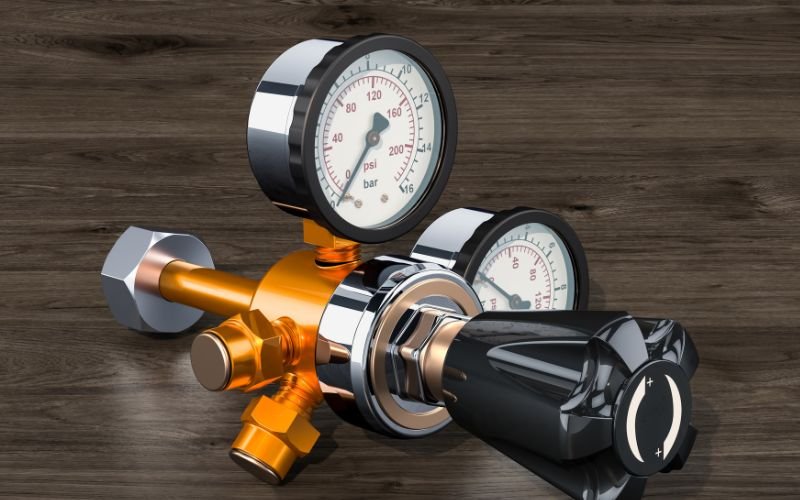
Diagnosing Pressure Fuel Selector Problems
Before replacing a Pressure fuel regulator, it is important to diagnose the issue accurately. Many of the symptoms caused by a faulty regulator overlap with those from a failing fuel pump, clogged fuel filter, or faulty injectors.
Tools You Will Need
- Fuel pressure gauge (rated for your system, usually up to 100 PSI)
- Vacuum pump (optional but helpful)
- OBD-II scanner (for newer vehicles)
- Multimeter (for checking related sensors and voltage)
Step-by-Step Diagnosis
1. Check Fuel Pressure at the Rail
Connect a fuel pressure gauge to the Schrader valve on the fuel rail (if equipped).
- Compare the reading to the manufacturer’s spec (usually between 40–60 PSI for most EFI engines).
- Revise the engine slightly and observe the pressure changes.
2. Test with Vacuum Disconnected
- Remove the vacuum line from the regulator.
- If fuel comes out of the vacuum port, the diaphragm is ruptured. Replace it immediately.
- If the pressure doesn’t rise when disconnected, the regulator may be stuck.
3. Perform Leak-Down Test
- Turn the key to “on” without starting the engine.
- Monitor how quickly the pressure drops after the pump shuts off.
- A fast drop usually indicates a bad regulator, leaky injectors, or a faulty check valve in the pump.
4. Read Trouble Codes
Using an OBD-II scanner, check for diagnostic trouble codes (DTCs) such as:
- P0089: Fuel pressure performance
- P0190 – P0193: Fuel rail pressure sensor issues
- P0172/P0175: System too rich (possibly due to regulator stuck closed)
How to Replace a Fuel Compression (DIY Guide)
If your diagnosis confirms a bad fuel regulator, here is how to replace it safely.
Fuel systems are under high pressure. Always relieve pressure before disconnecting any lines.
Tools and Materials
- Safety goggles and gloves
- Fuel pressure gauge (for verification)
- New fuel pressure Selector
- Screwdrivers, sockets, wrenches
- Shop towels
- Fuel line disconnect tool (if applicable)
- Vacuum hose (if the old one is cracked)
Replacement Procedure (Generic Steps)
Step 1: Disconnect the Battery
Always begin with safety, disconnect the negative terminal to avoid sparks.
Step 2: Relieve Fuel Pressure
Use the Schrader valve or remove the fuel pump relay and crank the engine for a few seconds.
Step 3: Locate the Regulator
Most regulators are mounted:
- On the fuel rail (external)
- Inside the fuel tank (returnless systems)
Step 4: Remove Vacuum Line and Bolts
Disconnect the vacuum line and unscrew any mounting bolts or clips.
Step 5: Disconnect the Fuel Line
Use a line disconnect tool or carefully pull the regulator away. Catch any fuel spills with a rag.
Step 6: Install the New Regulator
Reverse the steps using the new unit. Replace the O-ring if provided.
Step 7: Reconnect Battery and Test
Cycle the key on a few times, then start the engine and check for leaks or abnormal behavior.
Pro Tip:
When replacing the regulator, inspect nearby components like the fuel filter, fuel injectors, and vacuum hoses for wear or clogging. A failing fuel pressure often does not fail alone.
Performance Tuning with Adjustable Fuel Pressure Contoller
You are into performance upgrades, and an adjustable fuel pressure regulator is an essential tuning tool, especially for modified engines, forced induction systems, or high-flow injectors.
Why Use an Adjustable Regulator?
- Optimize Air-Fuel Ratios: Fine-tune fuel delivery for better combustion.
- Support Larger Injectors: Balance fuel delivery at different RPMs.
- Prevent Lean Conditions: Critical in turbo/supercharged applications.
- Enhance ECU Tuning Flexibility: Adjust for custom fuel maps.
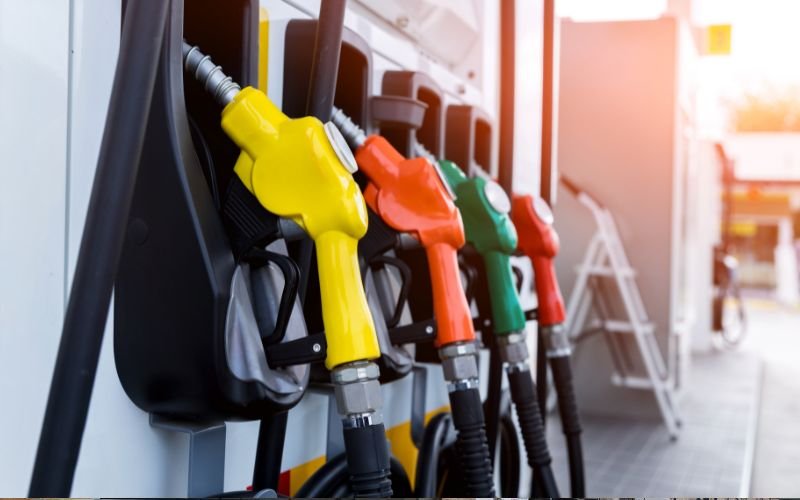
Tuning Scenarios
| Modification Type | Adjustment Needed |
| Turbo/supercharger added | Increase base pressure |
| High-flow fuel injectors | Calibrate to prevent over-fueling |
| Larger throttle body | Match fuel delivery with air intake |
| ECU remap | Fine-tune with dyno or AFR gauge |
Installation Notes
- Install a fuel pressure gauge in-line or on the regulator.
- Tune using a wideband O2 sensor and dyno testing for best results.
- Always match regulator capacity to fuel pump output and injector flow rate.
Top Fuel Regulator Brands & Product Recommendations
Here are some popular, trusted fuel Power regulators, from OEM replacements to high-performance models.
For OEM Replacement
- Delphi
- Reliable, cost-effective, OEM quality
- Reliable, cost-effective, OEM quality
- Bosch
- Common on European makes like BMW, VW
- Common on European makes like BMW, VW
- Denso
- Ideal for Toyota, Honda, and Lexus vehicles
For Performance and Adjustable Use
- Aeromotive
- EFI & carbureted performance regulators
- EFI & carbureted performance regulators
- Holley
- Tuning-focused, reliable under boost
- Tuning-focused, reliable under boost
- Fuelab
- High-end, race-grade regulators
- High-end, race-grade regulators
- AEM
- Great balance of affordability and tuning features
Cost Breakdown
| Type | Cost Range |
| OEM Regulator | $30 – $90 |
| Adjustable Performance | $100 – $300+ |
| Labor (if not DIY) | $100 – $250 |
Wrap Up:
The fuel Power regulator may not get the same attention as flashy turbochargers or shiny exhaust tips, but it is a vital part of your engine’s fuel management system.
Whether you’re a DIY mechanic, automotive student, or seasoned tuner, understanding the fuel force regulator gives you a huge advantage in diagnosing performance issues and optimizing fuel delivery.
Keep an eye on your fuel system, learn to listen to your engine, and don’t underestimate the impact of a small part with a big role.
Key Takeaways:
- Do not ignore signs like poor idle, fuel smell, or engine hesitation.
- Proper diagnosis can save hundreds on unnecessary repairs.
- For performance enthusiasts, adjustable regulators are a must-have tool.
- Choose reputable brands like Aeromotive, AEM, Bosch, and Denso.
- Maintenance matters: inspect hoses, sensors, and fuel rail components regularly.
FAQs
How long does a fuel pressure regulator last?
Most regulators last 100,000 to 150,000 miles, depending on driving conditions, fuel quality, and maintenance. However, high-performance or boosted engines may require more frequent inspection and earlier replacement.
Can a bad Power Source regulator cause a no-start?
Yes. If it fails, the engine may not receive enough fuel to start. It can also flood the engine if it’s stuck open, making cold starts difficult or impossible.
Will a check engine light appear with a bad regulator?
Often, yes. Faulty fuel pressure can trigger codes such as:
- P0089: Fuel pressure Selector performance
- P0171/P0172: System too lean or too rich
- P0190–P0193: Fuel rail pressure sensor issues
Is it safe to drive with a faulty fuel pressure Controller?
Short-term, perhaps, but it is not recommended. Driving with improper fuel pressure can damage fuel injectors, cause engine misfires, reduce fuel efficiency, and potentially harm the catalytic converter due to improper combustion.
Can I clean a fuel regulator instead of replacing it?
You can try cleaning it with fuel system cleaner or compressed air, especially if clogged by debris. However, if the diaphragm is torn or the internals are worn, replacement is the only fix.
Citation:
AutoZone (AZO). (n.d.). Fuel pressure regulator. AutoZone.com. https://www.autozone.com/fuel-delivery/fuel-pressure-regulator

